Japanese long eat Takuwan as a side dish during meals and eat this as a snack at teatime. It is one of the most traditional Japanese pickles and is named after the Buddhist priest who is said to have introduced the food. Beneficial to health, takuan is very rich in vitamins and nutrients.
What is Takuwan?
Takuwan is a pickled daikon radish and mainly eaten in Japan. It is also called takuan or takuwan. The nutritional value, texture, colour and flavour differ depending on the manufacturing method, such as dried radish and pickled in rice bran, salted radish without drying, or pickled in seasoning liquid.
Japanese make this by drying the daikon radish until it becomes soft and bendable and pickling it for about a month. In this way, the traditional method takes time and effort to pickle the pickles after drying them in the sun for several days. The texture is different from traditional pickled radish.
Etymology
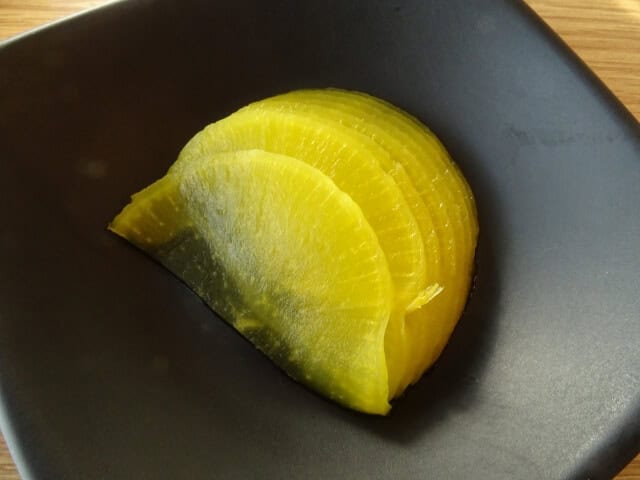
A priest by the name of Soho Takuan developed this pickled root, and it did not initially have a name so they got the name of the dish from him. The monk devised this in the early Edo period. The origin of the name “takuwan” is due to the high nutritional value of takuan. They ferment the takuan with salt and rice bran, so it contains a lot of nutrients such as vitamin B1. For this reason, they named it “takuwae-zuke,” which means “preserved pickles.”
Takuwan History
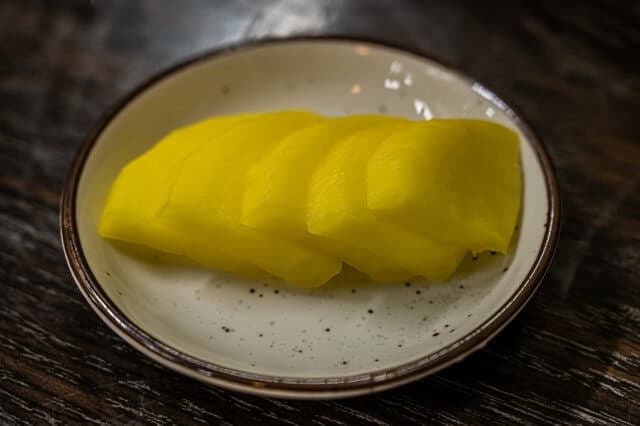
There are various theories, but one theory says that it was invented by Soho Takuan, a priest of the Rinzai sect of Buddhism, during the Edo period. Takuan was exiled to Dewa Province due to the Shigoromo Incident and retired to Harusamean (Kaminoyama City, Yamagata Prefecture ). Locals claimed that he dried and pickled a large amount of daikon radish brought by nearby residents and used it as preserved food.
In the 18th century, they ate this pickled radish not only in Edo but also in Kyoto and Kyushu. Also, on Mt. Hiei, there is a pickle called ‘Joshinbo,’ which is said to have been invented by Gensan Daishi Jie Daishi Ryogen (912-985) during the Heian period. There is also a theory that it is the founder. This was made by pickling whole dried daikon radish in layers with salt and straw, but what currently sold as ‘Jing atrium takuan’ is a typical rice bran pickled takuan.
Takuwan Recipe
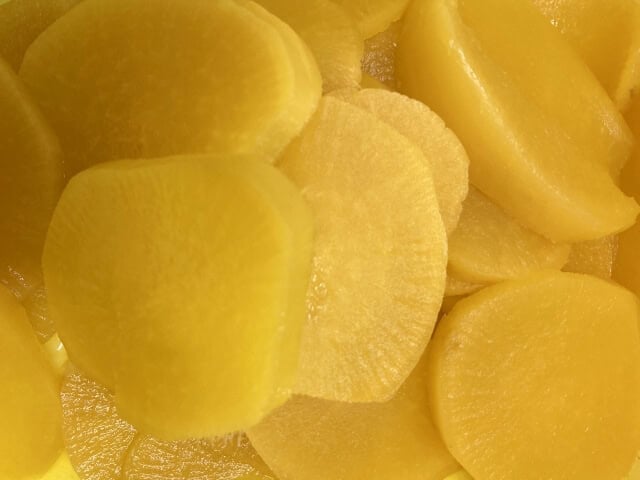
Takuan pickles are salty, but this is quite sweet and salty. By the way, a long time ago, they pickled them at 6 to 10%. Commercially available takuan has a salt content of about 2% thanks to temperature control, sterilization, and additives. Salt enhances the taste of pickled radish. The taste differs depending on the salt. We recommend using mineral-rich natural salt instead of pickles which are cheap. Not only the taste but also the fermented bacteria and the effect on the body are different.
Takuwan Ingredients
| Ingredients of Takuwan for 5 persons | Measurements |
|---|---|
| Daikon radish | 500g |
| Rice bran | 200g |
| Salt | 200g |
How to make Takuwan
Sprinkle rice bran and salt on the bottom of the bucket. Then pickle the daikon radishes in a line without gaps, aligning the heads.
Sprinkle with rice bran and salt. Repeat this and finally sprinkle rice bran and salt on top.
Finally, put a weight (lightly) on it. After fermenting for 6 to 12 months, it is ready.
Takuan-zuke flavour and colour tips
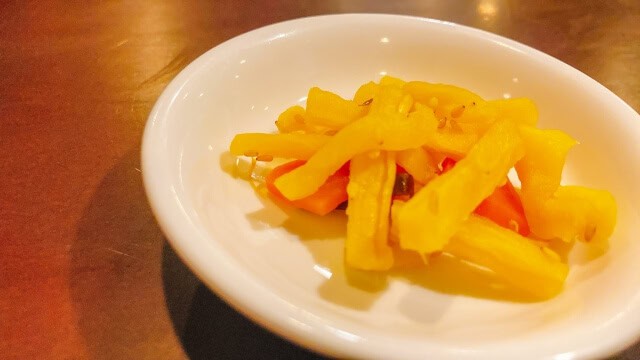
“Konbu” adds umami, “Mikan Peel” and “Yuzu Peel” add fragrance, and “Shochu” for preservation and flavour (spray on top to prevent mould). You can also try to add dried persimmon skin, apple skin, mirin, and sake lees, to add fragrance and mellowness. Then, for coloring you can try turmeric, kuchinashi, safflower etc. Lastly, before eating, garnish with yuzu peel or squeeze a few drops of mandarin orange to enjoy a gorgeous taste.
Types of Takuwan
Brown rice kasuzuke (radish pickled in brown rice malt)
Brown rice cake is an additive-free pickling material that contains brown rice malt, salt, a little vinegar and sugar. If you use this, it’s a little different from pickling with rice bran, but it adds the “richness of brown rice” and is delicious.
Pickled takuan
For pickled takuan, you can enjoy the texture just by salting. There are many reasons why takuan-zuke fails, such as the water not rising before pickling, the temperature and room temperature being too high, the rice bran going bad after pickling, mould growing, and film-forming yeast appearing. If you don’t pickle a lot, you don’t need to salt it too much or ferment it to increase its acidity to increase its shelf life.
Baby pickled radish from Yamagata
Since it contains vinegar, there is little worry about rotting, and the snow country pickling method has secured food until early spring. They drain the water, add 500g of granulated sugar, 130 ml of shochu, 5cc of rice vinegar, and pickle. It is completed in 10 days with a weight on it.
Difference between Takuwan and Takuan
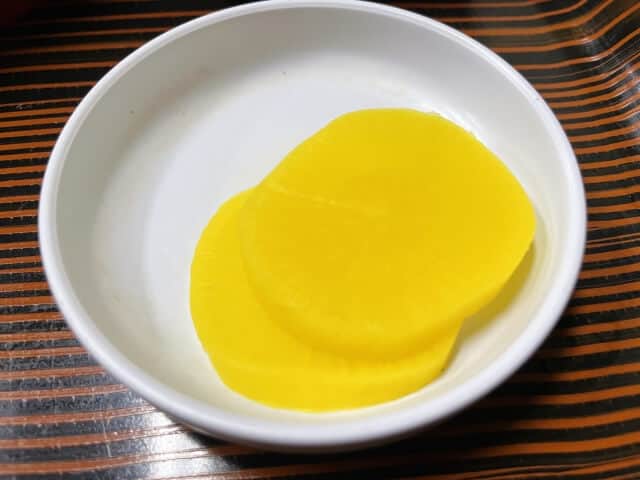
There is no clear difference between “Takuwan” and “Takuan”. Both words have the same meaning and pronounced differently. The correct name is “Takuan” because it is written as “Takuan (沢庵)” in kanji. The name “Takuwan” came from the fact that the gravestone of Soho Takuan resembled a takuan stone, or that the name “takuan” came from the similarity in the pronunciation of hozo-zuke and takuan-zuke.
Nutritional benefits of Takuwan
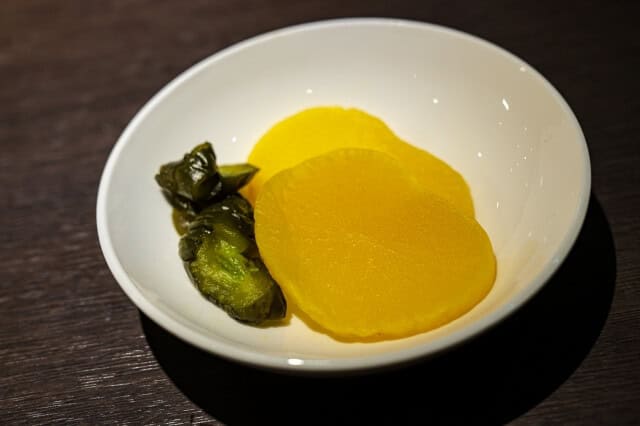
The root is a light-coloured vegetable and is rich in digestive enzymes such as diastase and amylase. These enzymes aid digestion and prevent heartburn and stomach upset. The part near the leaves contains oxidase, an oxidizing enzyme that works to suppress carcinogens. The pungent component, allyl isothiocyanate, is thought to have effects such as stimulating appetite, promoting digestion, and preventing blood clots. In addition, the leaves contain a lot of β-carotene and vitamin C and expected to enhance the immune system.
Recommended Takuwan
Ginza Mikawaya old pickled radish (銀座三河屋 昔のたくあん)
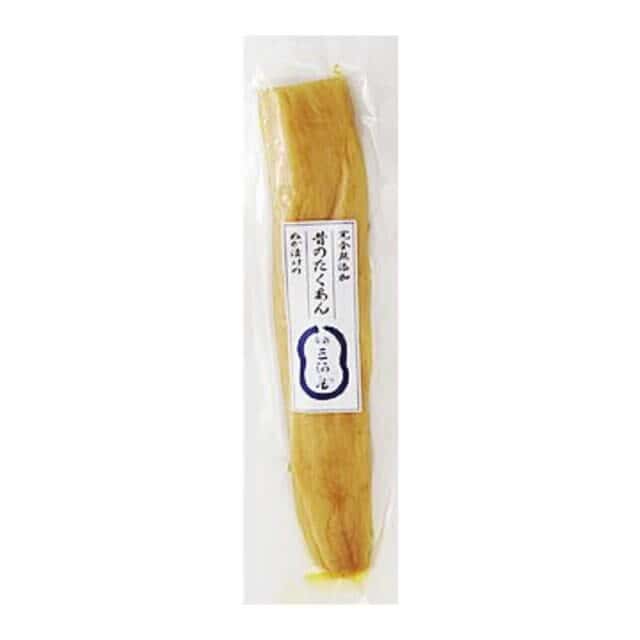
Sea salt from Ako, natural kombu seaweed from southern Hokkaido, persimmon skin and rice bran from Katsuragi, Wakayama Prefecture add a faint sweetness. All of these ingredients have been marinated for over half a year to create a deep-flavoured pickled radish. Compared to regular pickled radish, the salt content is less, about 4%.
Barrel Taste Lactic Acid Fermented Takuan Inakazuke

Takuan made from 100% domestic raw materials by a real pickle shop with no additives and aged for over 180 days. Here is the culmination of sophisticated techniques that can only be done by an old-fashioned pickle shop.
Umamon sweet and sour white pickled radish
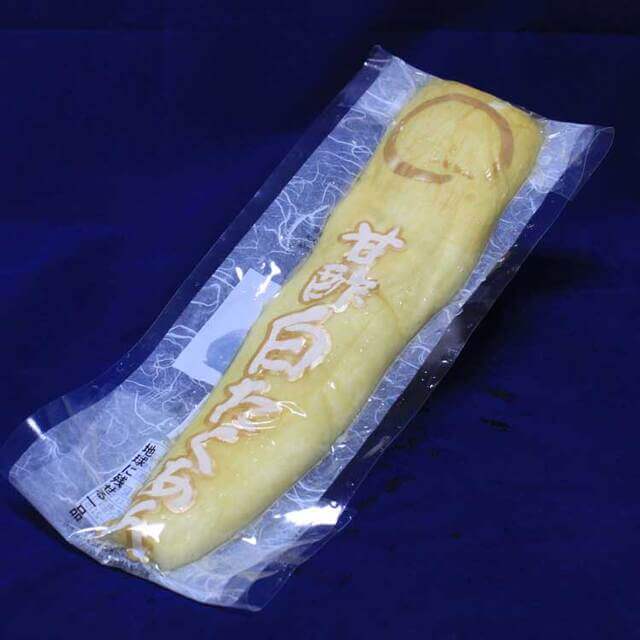
Daikon radish is washed in well water from the Nishiki River, then pickled in salt, then pickled in mellow rice vinegar and sugar (granulated sugar). Traditionally dried pickled daikon radish grown and dried in the sun and pickled.
Final Thoughts
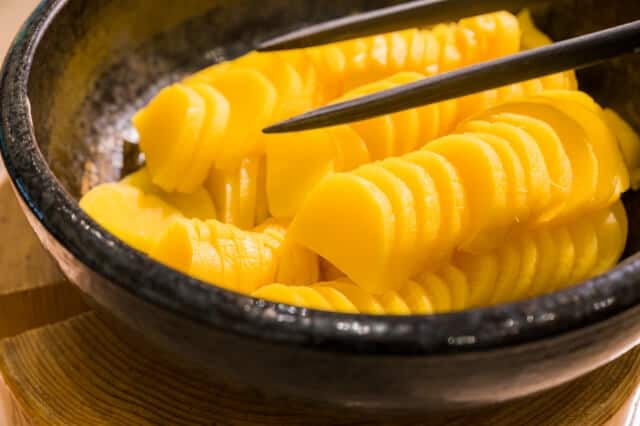
Takuan is one of the most popular Japanese foods. In short, it’s pickled Japanese daikon radish. More specifically, it’s the yellow crunchy stuff you generally find in your sushi roll. It’s a flavour booster as well as a neutraliser that goes very well with the sweet, salty and umami flavours of sushi and many more dishes. Naturally, you can find canned or sealed takuan in Asian speciality stores.
Takuan FAQ – Japanese Pickled Daikon
- What is Takuan?
Takuan is a traditional Japanese pickle made from daikon radish, usually yellow in color, with a crisp texture and tangy-sweet flavor.
- How is Takuan made?
Daikon radish is sun-dried, then pickled with rice bran, salt, and sometimes sugar, kombu, or chili for added flavor.
- Why is it yellow?
Traditionally, the yellow color comes from natural fermentation. Some modern versions use turmeric or food coloring.
- How is Takuan eaten?
It’s often served sliced as a side dish with rice, in bento boxes, or inside sushi rolls like futomaki.
- Is Takuan vegetarian or vegan?
Yes, it’s typically made only from vegetables and seasonings, making it suitable for vegetarians and vegans.
- Where can I try Takuan in Japan?
You’ll find it in traditional Japanese meals, supermarkets, and pickled goods shops all across Japan.
- Can I buy Takuan as a souvenir?
Yes, vacuum-packed takuan is commonly sold at food markets and souvenir shops, and it travels well.






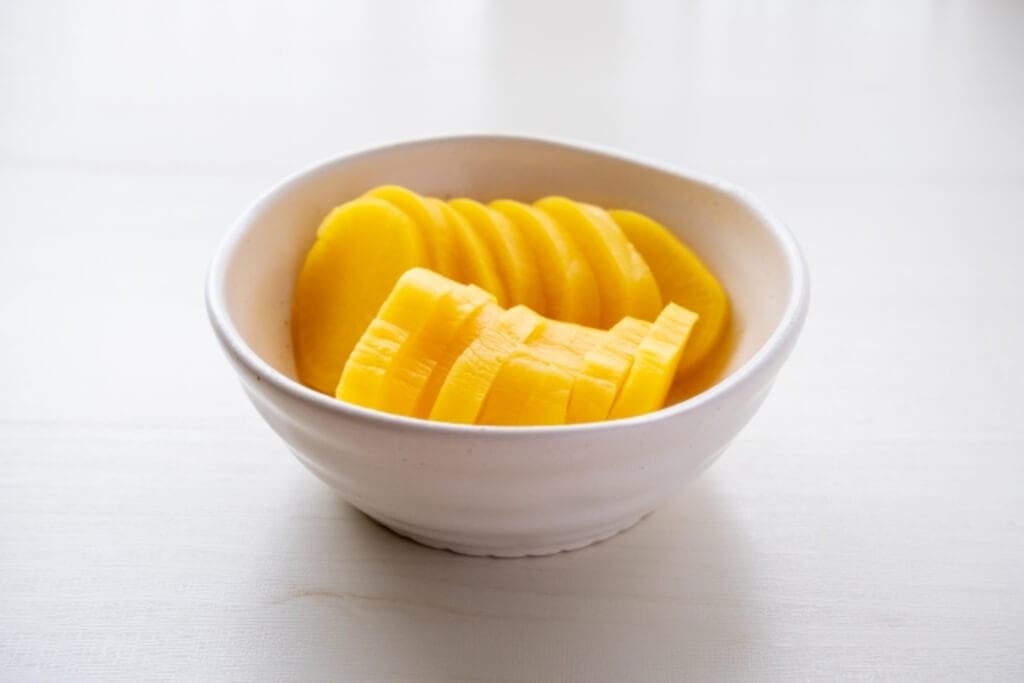
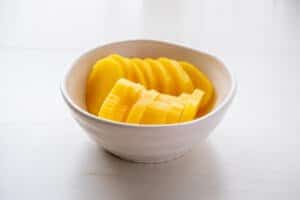
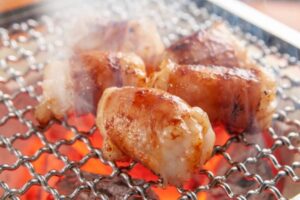
 牧野悦子-1-1256x832-1-300x199.jpg)
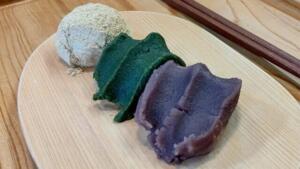
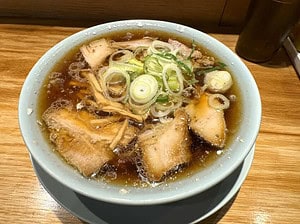
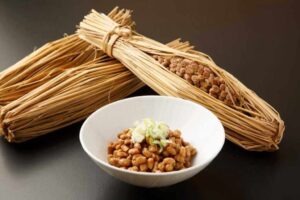
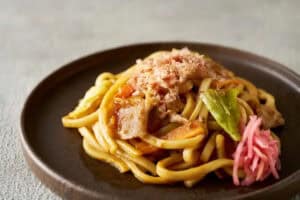
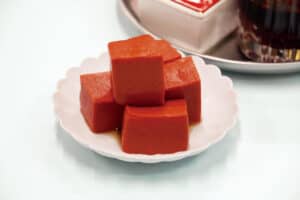
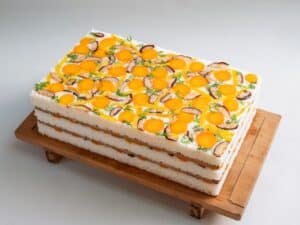
Comments